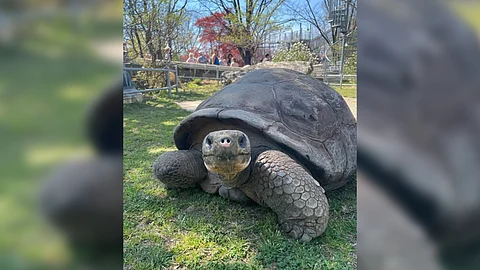
- NEWS
- the EDIT
- COMMENTARY
- BUSINESS
- LIFE
- SHOW
- ACTION
- GLOBAL GOALS
- SNAPS
- DYARYO TIRADA
- MORE

In a remarkable turn of events nearly a century in the making, the Philadelphia Zoo has announced the birth of four critically endangered Western Santa Cruz Galápagos tortoise hatchlings—the first successful hatching of the species at the zoo in over 150 years.
The proud parents? Mommy, a 97-year-old tortoise who has called the zoo home since 1932, and Abrazzo, a 96-year-old male introduced to her in 2022 as part of a strategic breeding plan. Despite their combined age nearing two centuries, this marks the very first time either has become a parent at the Philadelphia Zoo.
The hatchlings, all female, emerged between 27 February and 6 March from a clutch of 16 eggs laid by Mommy in November 2024. According to the zoo, the new arrivals are thriving and will make their public debut on 23 April—fittingly, the 93rd anniversary of Mommy’s arrival at the zoo. A naming contest is also planned.
Zoo officials are celebrating the event not just as a joyful moment for animal lovers, but as a critical step in global conservation. Western Santa Cruz tortoises are listed as critically endangered, and only 44 of them exist in U.S. zoos. Mommy, who is part of the Association of Zoos and Aquariums’ species survival plan, is considered one of the most genetically valuable individuals of her kind.
“These hatchlings represent hope for the future of their species,” said Jo-Elle Mogerman, Ph.D., the zoo’s president and CEO. “Our vision is that they’ll be thriving on a healthy planet 100 years from now.”
Zoo herpetologist Lauren Augustine described the hatchlings as “feisty” and about the size of tennis balls. While they won’t physically share space with their 400-pound dad or 280-pound mom due to safety concerns, the babies are expected to be monitored closely in captivity for at least five years. After that, their future—whether in another zoo or potentially in the Galápagos Islands—will be determined by conservationists.
This historic hatching offers not only a chance to expand the population of an endangered species but also an opportunity to inspire a new generation of wildlife advocates.
(Sources: Yi-Jin Yu, ABS-7; Sopan Deb, NYT; AP)
